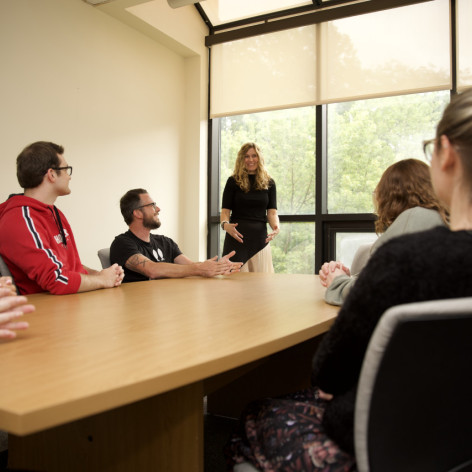Fort Wayne artist exhibits sculpture at Huntington College
FOR RELEASE: Thursday, January 6, 2000
HUNTINGTON, IN- The Robert E. Wilson Gallery of the Merillat Centre for the Arts will present "There's Something in the Water," an exhibition of ceramic sculpture by Dana Goodman, from January 31 through February 25, 2000. A reception for the artist will be held Saturday, February 5, 2000, from 6 to 7:30 p.m. Mr. Goodman will give a gallery talk at 7 p.m.
Huntington College's Robert E. Wilson Gallery is open weekdays from 9 a.m. to 5 p.m., before and after all Merillat Centre performances, and by appointment. For further information, contact HC art professor Rebecca Coffman, (260) 359-4272.
Dana Goodman is currently an Assistant Professor of Sculpture at Indiana University/Perdue University - Fort Wayne (IPFW). He holds degrees in fine arts from the University of Iowa and Ohio University.
"The focus of my sculptures are animals and environments experienced during my many years of rural life," says Goodman. "I chose to depict creatures and habitats which are often overlooked by people not in direct contact with the land. My sculptures of earthworms churning the soil, stubborn beetles plugging along, or bare tree roots searching for nourishment, are not beautiful and romantic images of nature. Rather, they document the interaction, sometimes frantic and nonsensical, between smaller less glamorous species."
"My sculptural environments depict plants and animals that are reliant on the land and each other for survival. At different levels, distinct creatures and plant life take on their role as most important. The sculptures have no reference to human existence, presenting animal societies having their own system of organization and survival devoid of human contact. But my animal and plant environments are not idyllic or free from conflict. They show struggle and tension between unlikely, disjointed foes; conflicts that reflect accumulated memory rather than specific moments."
"I use clay and ceramic finishing techniques to represent my animal and plant worlds. The choice makes metaphoric sense because of clay's relationship to the earth from which plants and animals spring. In more practical terms, clay provides my forms an organic quality that serves well to represent 'growing' forms. The scale of my work is often large and heavy feeling, relating directly to my agricultural life, where massive animals and large spaces rule; a landscape where smaller, less romantic animal worlds go largely unnoticed."



